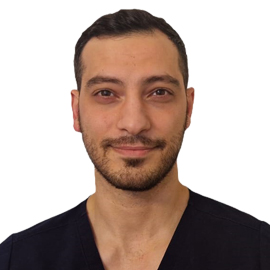
Dr Aziz has worked with many different implant systems and has a vast knowledge of placing and restoring Dental Implants. He has invested in state-of-the-art equipment and technology to enhance the patient's care but to also help achieve the high standards he sets. Salam is committed to furthering his knowledge and has undergone a number of post graduate courses by some of the world's leading clinicians that has taken him to different continents to ensure he can provide his patients with the smile they desire.
Salam strongly believes in a patient centred treatment planning and will go into detail about your goals, desired before embarking into any treatment. Salam loves meeting new people and offers free consultations to those who want to know more about dental implants.
Dental implants are an ideal long term solution to replace missing teeth. Implants replicate the function and aesthetics of a normal tooth, thus restoring a patients’ confidence.
Unlike dentures, implants are a fixed option, meaning you do not need to remove them and you do not fixative to hold them in.
Unlike a dental bridge, implants do not require teeth to be present either side of the gap (which is the case for a dental bridge as this involves capping and anchoring to the adjacent teeth).
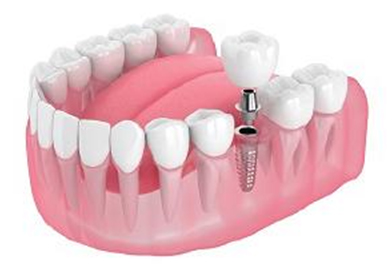
Single implants replace a missing tooth
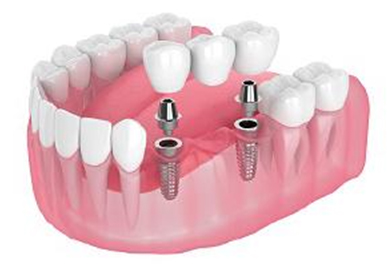
Implant bridges can restore multiple adjacent missing teeth. Unlike a traditional bridge (conventional bridge) the dentist does not need to prepare teeth either side of the gap meaning this is a less invasive option for the possibly otherwise healthy teeth either side of the gap.
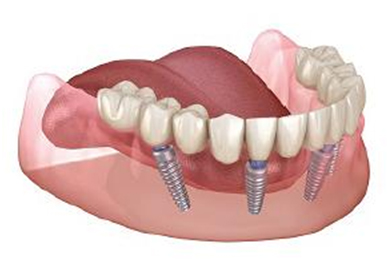
Patients missing all teeth in the arch can have 4 or 6 dental implant screws placed, and on top a long span implant bridge, thus replacing multiple teeth.
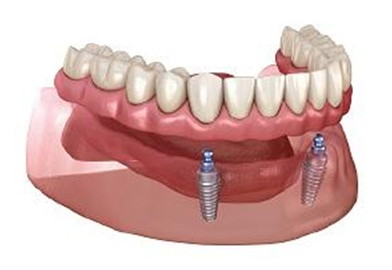
Overdentures replace an entire arch of missing teeth, either top, bottom or the full mouth. These can either be fixed or removable depending on your requirement.

Patient’s must book an initial consultation with our dentist. At this appointment he/she will perform a dental examination, review your medical history, and discuss all options available to you including pros and cons, and financial costs.
If you have not yet had the tooth removed, our dentist can arrange this for you.
If you are interested in implants, and the dentist deemed you a suitable candidate, the dentist will arrange for further investigations e.g. x-rays such as a CT scan which will be performed at a location close to you. The dentist may take additional x-rays and impressions of your mouth for our diagnostic records.
Once the dentist has all your records, he/she will discuss whether or not you have enough bone to proceed. If you have insufficient bone, this does not necessarily mean you cannot have an implant, it may mean you need further treatment such as a bone graft.
This involves numbing up the area, placing the titanium screw in the jaw bone. it is likely that titches will be placed in which case you may be asked to come back 2 weeks later to have these removed. Once the implant heals (usually between 3-6 months) the artificial tooth/teeth can be placed on top. During the healing period, a temporary tooth/teeth can be placed on top or a temporary removable appliance. This will all be discussed further with your dentist during your consultation as this case dependant.
It is important that you attend your review appointments with the dentist and maintain good oral hygiene at home as well as regular visits with our dental hygienist.
 £
Sutton
020 3827 4522
Benhill Dental Practice
£
Sutton
020 3827 4522
Benhill Dental Practice
Dr Aziz is a fantastic implant dentist I was so anxious about the procedure but he made me relax by playing my favourite music I don't know why I was so worried
 £
Sutton
020 3827 4522
Benhill Dental Practice
£
Sutton
020 3827 4522
Benhill Dental Practice
If I could give Dr Aziz 11 stars out of 10 I would. He is professional, caring, kind and informative he even gave me an check up while he was seeing me and doing my implant. I would definitely recommend him to everyone I even went on to have composite bonding to complete my smile done exceptionally well by Dr Aziz
 £
Sutton
020 3827 4522
Benhill Dental Practice
£
Sutton
020 3827 4522
Benhill Dental Practice
I have been a patient at Benhill Dental Practice for many years and after the pandemic I was rather apprehensive as the practice had changed hands and the dentist I had had for years had retired. However, I need not have worried. I consider Dr Aziz to be an extremely good dentist and I would not hesitate to recommend him for general dentistry or implants
A bone graft is performed when it is deemed there is insufficient good quality bone to place an implant. It involves exposing the area where the tooth is missing, and placing bone graft material into the area. The material acts as a scaffold to enable bone to grow over the defected area. The area is then left to heal for a period of 3-6 months. There are different types of bone graft material, your dentist can discuss which one is best suited for you.
Your dentist will assess whether or not you are a suitable candidate for an implant. You must have a healthy mouth and good oral hygiene, with enough bone structure to enable an implant to be placed. This will be assessed in the form of x-rays including a low dose CT scan.
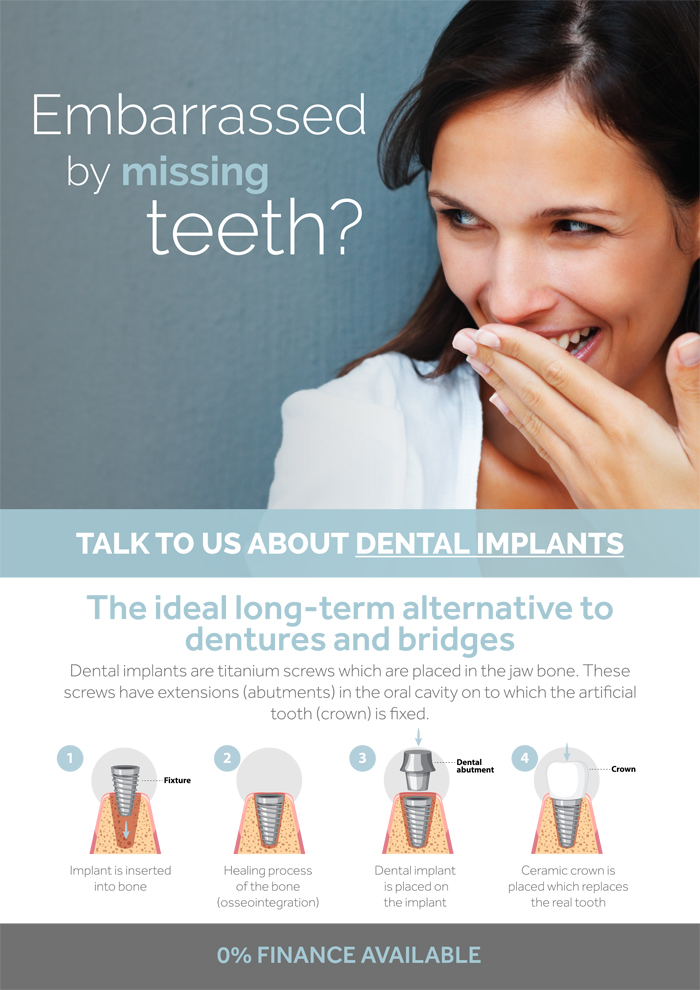
The cost of an implant varies due to a number of factors such as:
At your initial consultation your dentist will advise you of the anticipated costs.
We have partnered with Tabeo to provide interest free (over 12 months) and interest-bearing finance options available to help you spread the costs of implant treatment.

Dr Aziz is a fantastic implant dentist I was so anxious about the procedure but he made me relax by playing my favourite music I don't know why I was so worried" - Verified Patient
If I could give Dr Aziz 11 stars out of 10 I would. He is professional, caring, kind and informative he even gave me an check up while he was seeing me and doing my implant. I would definitely recommend him to everyone I even went on to have composite bonding to complete my smile done exceptionally well by Dr Aziz
I have been a patient at Benhill Dental Practice for many years and after the pandemic I was rather apprehensive as the practice had changed hands and the dentist I had had for years had retired. However, I need not have worried. I consider Dr Aziz to be an extremely good dentist and I would not hesitate to recommend him for general dentistry or implants
I have been coming to Benhill Dental Practice for a number of years' now and purely because of the treatment and service provided by Dr Alexandra Fivey and support staff.
My 9 year old daughter recently had to have two fillings and an extraction, Dr Alexandra handled her so well and we were so pleased with the outcome! I couldn't recommend her enough as a dentist! Thank you!
Alex and Rachel always provide a professional and thorough service for myself, my husband and daughter. We have been going to see them for the last few years and have always had a positive and personal experience. They are very patient and gentle with my 10 year old daughter, who before going, was not keen on seeing the dentist or hygienist! I would highly recommend!
Great, friendly dentists! Dr Alexandra and her colleagues go out of their way to make you feel comfortable and offer the best advice.
I would like to thank Dr Alexandra for making our first visit in the practice an amazing experience. My son who is 6 years old needed his tooth taken out after being inflamed for some time. Dr Alexandra is a BRILLIANT dentist, clearly with lots of experience and professionalism and someone who loves her job…We are very happy that we found Dr Alexandra! Thank you so much!!!







